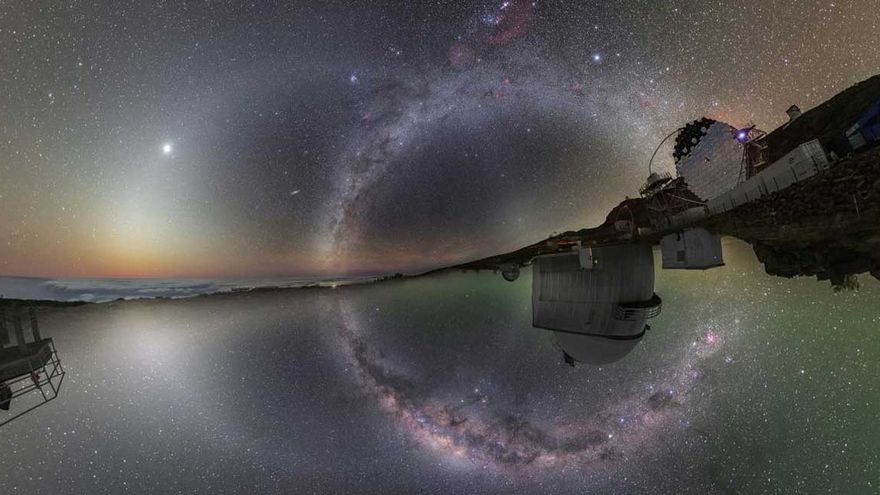The night sky is not completely dark, even in the most remote places. There is always a sky glow produced both by natural components of terrestrial or extraterrestrial origin, and by artificial light emission resulting from human activity. Although the main bright sources such as the Moon, the Milky Way or the Zodiacal Light are easily recognizable, there is a glow that dominates the brightness of the sky on the darkest nights, produced in the upper layers of the atmosphere and whose variability depends in a complex way on factors such as the time of year, the geographical location or the solar cycle, called Gegenshein.
TESS photometers installed around the world, have collected 11 million measurements since 2018, enough to define a reference method for the study of natural darkness with devices of this type. Among the results of the article, which will be published soon in the journal The Astronomical Journal, highlights the “systematic observation of short period variations (in the order of tens of minutes or hours) of sky brightness regardless of location, season, time of night or solar activity , and which have been shown to be associated with events that occur in layers above the mesosphere, that is, the airglow,” explains Miguel R. Alarcón, researcher at the Instituto de Astrofísica de Canarias (IAC) and first author of the article.
On the other hand, the brightness produced by the scattering of artificial nighttime light (LAN) by the components of the atmosphere (gas molecules, aerosols, clouds, ….) is known as artificial skyglow. Estimates suggest that more than a tenth of the Earth’s land surface experiences LAN and that figure rises to 23% if atmospheric skyglow is included. Eighty per cent of the world’s population lives in places where there is artificial light pollution and about a third of them cannot see the Milky Way. There are very few places left on the planet where natural darkness can be appreciated, observed and measured.
This work, however, has not only demonstrated the high sensitivity of low-cost photometers – which was its main objective – but also confirms what many had already predicted: the night sky of La Palma is the best in the world. “The network of photometers has once again shown that the Canary Islands Observatories are in the first division,” said Miquel Serra-Ricart, astronomer at the IAC and co-author of the article. Although the 44 photometers have taken data from places like Namibia, Australia, Mexico, Argentina or the United States, the reality is that “the Roque de los Muchachos Observatory (ORM, Garafía, La Palma) is the darkest of them all”. “The final analysis of the set of TESS photometers shows the Gegenschein, a faint luminosity that is only seen in very dark skies and that is located in the same region in which we can see the zodiacal light or the planets”, adds Miquel Serra-Ricart, astronomer of the IAC and co-author of the article. As can be read in the article, the darkness of the ORM is close to natural darkness -the artificial light only adds 2% to the sky background-. Of the network of photometers installed in the Iberian Peninsula, the Community of Extremadura, the Montsec region (Lleida), Javalambre (Teruel), Sierra Nevada or the Navarrese Pyrenees also present a great darkness.

